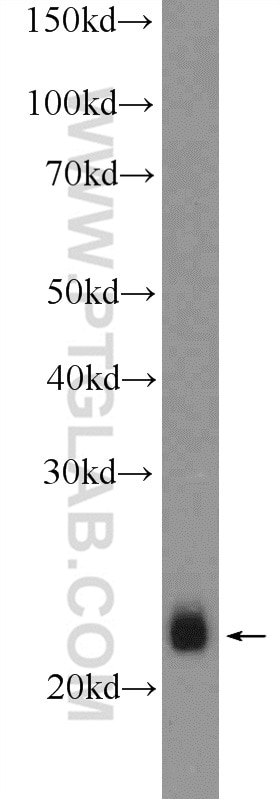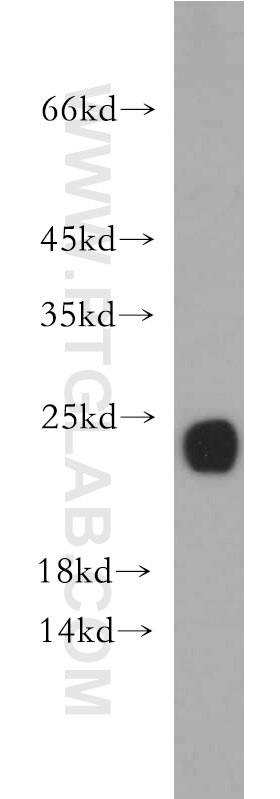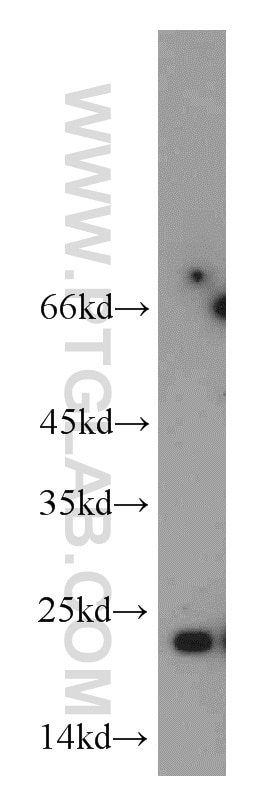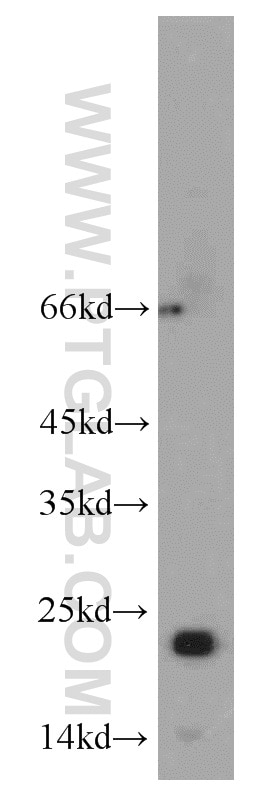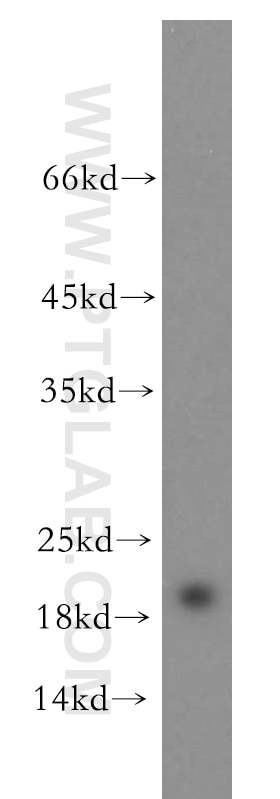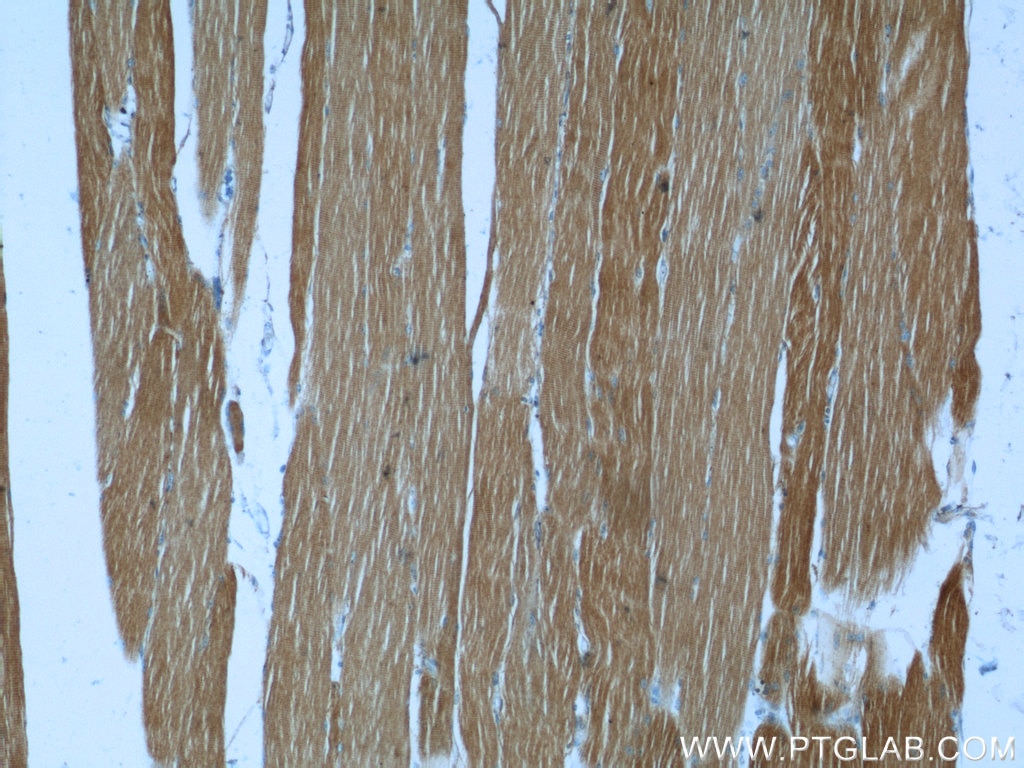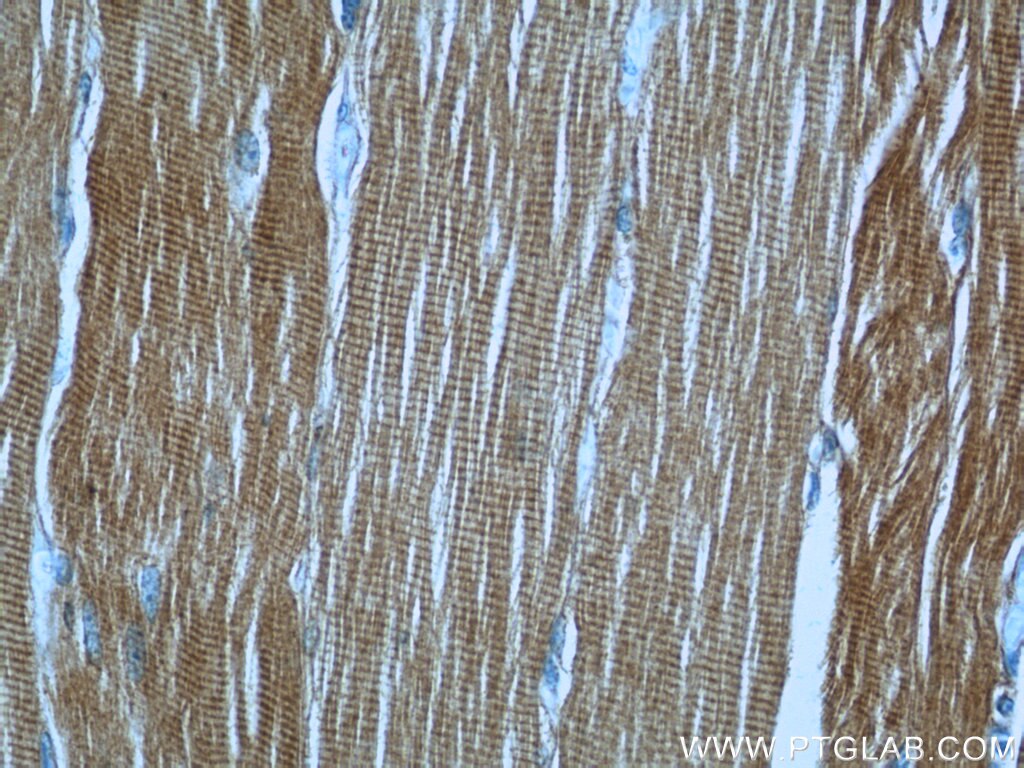- Featured Product
- KD/KO Validated
RTN2 Polyklonaler Antikörper
RTN2 Polyklonal Antikörper für WB, IHC, ELISA
Wirt / Isotyp
Kaninchen / IgG
Getestete Reaktivität
human, Maus, Ratte
Anwendung
WB, IHC, IP, ELISA
Konjugation
Unkonjugiert
Kat-Nr. : 11168-1-AP
Synonyme
Geprüfte Anwendungen
| Erfolgreiche Detektion in WB | Maus-Skelettmuskelgewebe, humanes Skelettmuskelgewebe |
| Erfolgreiche Detektion in IHC | humanes Skelettmuskelgewebe Hinweis: Antigendemaskierung mit TE-Puffer pH 9,0 empfohlen. (*) Wahlweise kann die Antigendemaskierung auch mit Citratpuffer pH 6,0 erfolgen. |
Empfohlene Verdünnung
| Anwendung | Verdünnung |
|---|---|
| Western Blot (WB) | WB : 1:500-1:2000 |
| Immunhistochemie (IHC) | IHC : 1:20-1:200 |
| It is recommended that this reagent should be titrated in each testing system to obtain optimal results. | |
| Sample-dependent, check data in validation data gallery | |
Veröffentlichte Anwendungen
| KD/KO | See 1 publications below |
| WB | See 4 publications below |
| IHC | See 4 publications below |
| IP | See 1 publications below |
Produktinformation
11168-1-AP bindet in WB, IHC, IP, ELISA RTN2 und zeigt Reaktivität mit human, Maus, Ratten
| Getestete Reaktivität | human, Maus, Ratte |
| In Publikationen genannte Reaktivität | human, Maus |
| Wirt / Isotyp | Kaninchen / IgG |
| Klonalität | Polyklonal |
| Typ | Antikörper |
| Immunogen | RTN2 fusion protein Ag1655 |
| Vollständiger Name | reticulon 2 |
| Berechnetes Molekulargewicht | 59 kDa, 51 kDa, 22 kDa |
| Beobachtetes Molekulargewicht | 20-23 kDa |
| GenBank-Zugangsnummer | BC014244 |
| Gene symbol | RTN2 |
| Gene ID (NCBI) | 6253 |
| Konjugation | Unkonjugiert |
| Form | Liquid |
| Reinigungsmethode | Antigen-Affinitätsreinigung |
| Lagerungspuffer | PBS with 0.02% sodium azide and 50% glycerol |
| Lagerungsbedingungen | Bei -20°C lagern. Nach dem Versand ein Jahr lang stabil Aliquotieren ist bei -20oC Lagerung nicht notwendig. 20ul Größen enthalten 0,1% BSA. |
Hintergrundinformationen
Reticulon (RTN) proteins are a group of membrane-bound proteins that largely reside in endoplasmic reticulum (ER) (PMID: 18177508). Reticulon proteins share a common sequence feature, the reticulon homology domain (RHD). They are involved in shaping the tubular endoplasmic reticulum network, membrane trafficking, inhibition of axonal growth, and apoptosis (PMID: 24218324). Four mammalian reticulons (RTN1-4) exist. Human RTN2 gene produces three isoforms termed RTN2-A, RTN2-B, and RTN2-C. Isoform RTN2-C has a calculated molecular weight of 22 kDa and is highly expressed in skeletal muscle.
Protokolle
| PRODUKTSPEZIFISCHE PROTOKOLLE | |
|---|---|
| WB protocol for RTN2 antibody 11168-1-AP | Protokoll herunterladen |
| IHC protocol for RTN2 antibody 11168-1-AP | Protokoll herunterladenl |
| STANDARD-PROTOKOLLE | |
|---|---|
| Klicken Sie hier, um unsere Standardprotokolle anzuzeigen |
Publikationen
| Species | Application | Title |
|---|---|---|
J Cell Biol Dynamic interaction of REEP5-MFN1/2 enables mitochondrial hitchhiking on tubular ER | ||
Mol Med Rep RTN2, a new member of circadian clock genes identified by database mining and bioinformatics prediction, is highly expressed in ovarian cancer | ||
Cell Death Dis Reticulon 2 promotes gastric cancer metastasis via activating endoplasmic reticulum Ca2+ efflux-mediated ERK signalling.
| ||
Cell Signal O-GlcNAcylation enhances Reticulon 2 protein stability and its promotive effects on gastric cancer progression | ||
Neuroreport Reticulon 4 reflects endoplasmic reticulum stress in arginine vasopressin neurons |
